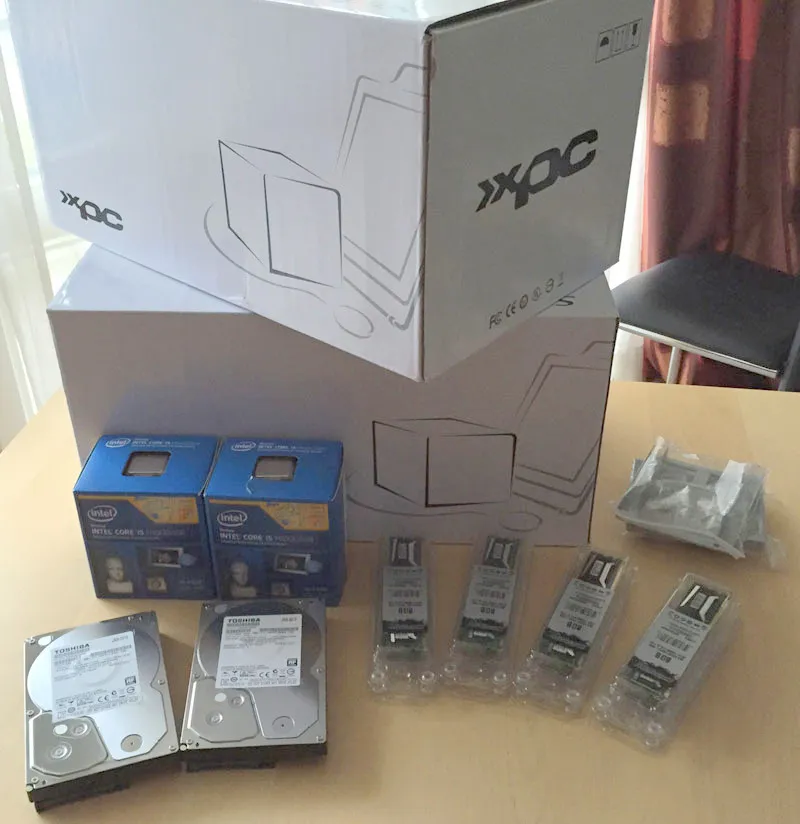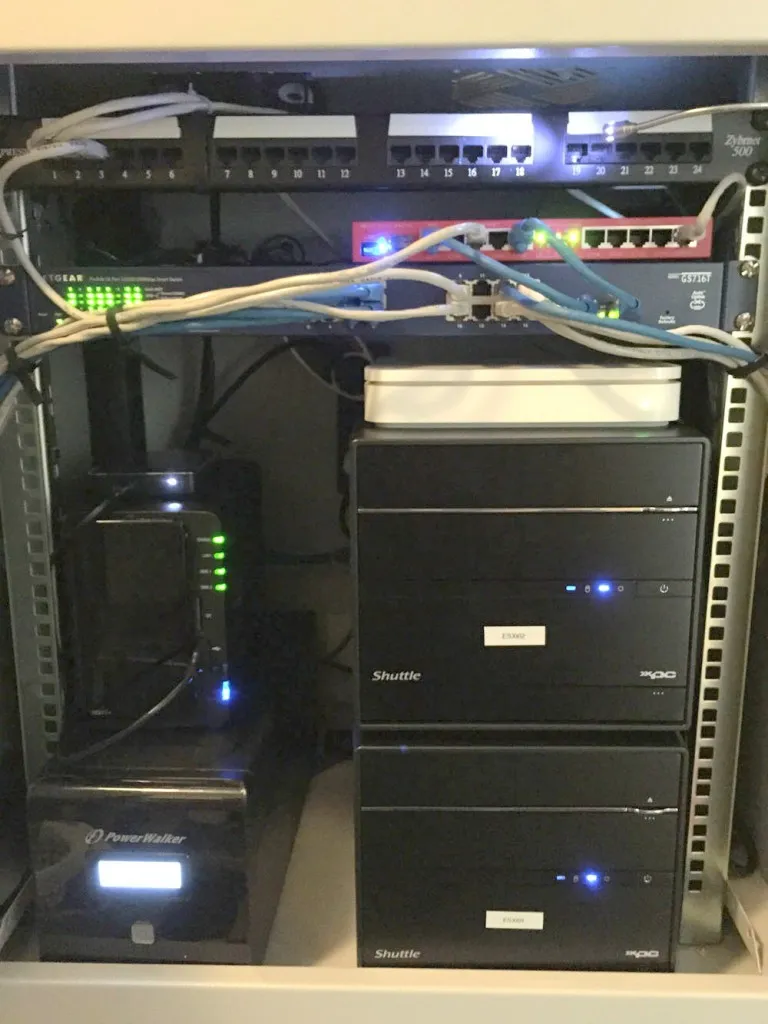New VMware Home Lab
Until a few weeks ago, my test lab environment was the same as my production environment (where WhatPulse and this website runs on), but in a different resource pool for some prioritisation. The test environment on occasion would make trouble for the production and it was growing too big to keep it where it was. So I decided I needed a dedicated test environment.
So I made a list of requirements I had and did what everybody does, I started to google for these specs. My requirements were pretty basic: small enclosures, low power, at least 32GB of RAM, multiple local disks so VSAN can be used, at least 2 - hopefully 4 - gigabit network interfaces and it shouldn’t cost the world. Especially the 32GB minimum was tricky. There are a lot of good and small enclosures, but most of them only support 16GB.
After looking for a while, someone nudged me in the direction of the Shuttle enclosures. While the config Erik used was for 16GB, I discovered my requirements fit in the model SZ87R6:
The Shuttle SZ87R6 is 33.2x21,6x19.8 cm (LxWxH) in size, has room for 3 disks (2 x 2.5” and 1 x 3.5”), supports Intel i3 / i5 / i7 and has a maximum of 32GB RAM. Below is the full kitlist I used:
| Description | Price |
|---|---|
| Shuttle SZ87R6 | € 277,50 |
| Intel Core i5-4460 (4 x 3.2GHz, 84W) | € 188,49 |
| Ballistix Sport 16GB (2x8GB), DDR3, 1600MHz (times 2, total 32GB) | € 228,92 |
| Toshiba DT01ACA200, 2TB SATA (times 2) | € 153,06 |
| SanDisk X110 128GB SSD mSATA | € 68,75 |
| Dual Gigabit port Intel 82571EB | (was laying around) |
| Total | € 916,72 |
 (first shipment)
(first shipment)
ESXi 6.0
The onboard Realtek 8168 Gigabit ports are not recognised by ESXi by default, you’ll need to install the net-r8168 package by hand. Due to the extra PCI network cards I installed (which were recognised by ESXi off the bat), I was able to simply install ESXi without doing anything special and add the net-r8168 later on. If you do not have this luxury, you should create a custom ESXi ISO with the required packages and install ESXi with that custom ISO. Tom Fojta has explained how to do that here.
It’s not on the kitlist, but I used a simple USB stick (4GB) to install and boot ESXi from. That way I can keep the disks reserved for VM data. Because I only have 2 Shuttles at the moment, VSAN is not enabled. However, just to check - I added a nested ESXi to the same cluster as the Shuttles and tested VSAN. This test assured me I can switch to VSAN when I get a third. :-)
Networking
In order to support 8 extra Gbit network ports, I switched to a Netgear ProSafe GS716Tv3 manageable switch with 16 x 100/100/1000 and 2 x shared SFP ports (€ 117,-). This switch can do VLANs, access lists, QoS, 802.1x authenticatie, rate limited and IGMP (Multicast support for NSX, yay!). As the layer 3 router/border firewall, I use a MikroTik Routerboard RB2011UiAS-2HnD-IN which has OSPF relations to the NSX Edge Services Gateways, handles my incoming ISP connection, outgoing and incoming VPNs and has a nice IPv6 tunnel (my ISP does not do IPv6).
Since having some home infrastructure, whether it be a simple router/firewall, a NAS storage system and wireless equipment, I have stored it in a small (quarter) 19 inch rack to keep the equipment safe from dust, put in proper cooling, etc. These Shuttles moved in quite nicely, they are a perfect fit!

